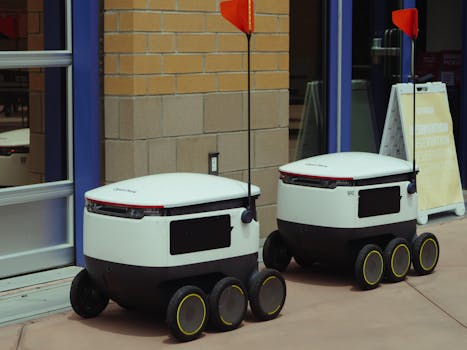AI Behind the Wheel: How Self-Driving Cars Make Decisions
Self-driving cars have been a hot topic for several years now, with major companies such as Google, Uber, and Tesla investing in this technology. The idea of a car navigating through traffic without a human behind the wheel seems like something straight out of a sci-fi movie, but it is quickly becoming a reality. But have you ever wondered how these vehicles make decisions on the road? The answer lies in Artificial Intelligence or AI, the driving force behind these self-driving cars. In this article, we will explore the AI technology behind the wheel and how it allows these cars to make decisions.
Understanding the Basics of AI
Before delving into how AI works in self-driving cars, let’s understand the basics of AI. Simply put, AI is a field of computer science that involves creating intelligent machines that can think and act like humans. It uses algorithms, computer programming, and data to simulate human intelligence. With advancements in technology, AI has been used in various applications, including self-driving cars.
Now, let’s look at how AI and self-driving cars go hand in hand.
Sensors: The Eyes and Ears of a Self-Driving Car
A self-driving car is equipped with multiple sensors that act as its eyes and ears. These sensors collect data from the surroundings, such as road signs, traffic signals, and other vehicles. The data collected is then fed into the AI system, where it is analyzed and used to make decisions.
The Role of Machine Learning
The next crucial aspect of AI in self-driving cars is machine learning. It is an application of AI that allows the system to learn from experience without being explicitly programmed. In simple terms, self-driving cars use machine learning to understand patterns, scenarios, and situations on the road.
For example, in a scenario where an ambulance is approaching from behind with its siren blaring, the AI system will analyze this situation and know that it needs to pull over to let the ambulance pass. This understanding is based on previously collected data and experiences. The more the car is on the road, the more it learns and becomes better at decision-making.
Decision Making: The Brain of a Self-Driving Car
The sensors and machine learning work together to feed data into the decision-making system of a self-driving car, known as the brain. The brain analyzes all the information it receives and makes decisions based on an algorithm that is programmed into it. These decisions are made in real-time, allowing the car to navigate through complex scenarios on the road.
Safety Measures: Guiding the Car in Tough Situations
One of the significant concerns with self-driving cars is the safety of passengers and pedestrians. To ensure safety, the AI system is designed with multiple safety measures. For instance, the system can detect and respond to erratic driver behavior, such as speeding or sudden braking. It can also take control of the car if it detects any potential hazards on the road.
The Future of Self-Driving Cars and AI
The use of AI in self-driving cars is still in its initial stages, and there is still a lot of room for development and improvement. With the advancements in AI technology, it is expected that self-driving cars will become even more efficient and precise in decision-making. This would lead to faster adoption of this technology and make the roads safer for everyone.
Conclusion
In conclusion, AI plays a crucial role in the functioning of self-driving cars. From collecting data, understanding patterns, and making real-time decisions, AI technology has paved the way for autonomous vehicles on our roads. With continuous advancements, self-driving cars and AI will continue to evolve and make roads safer and more efficient for everyone.







